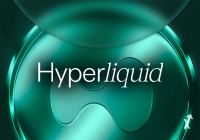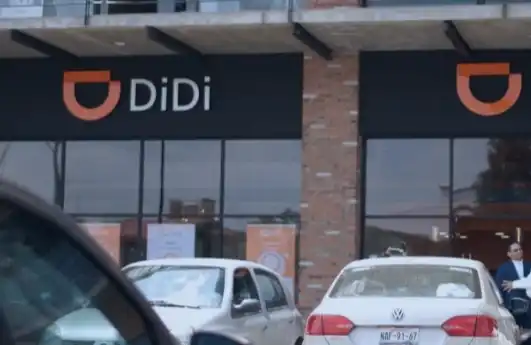The $5 Trillion Crypto Shift: Ethereum, Hyperliquid, SUI, and the High-Risk Allure of XYZVerse
- The $5 trillion crypto shift is driven by Ethereum’s institutional adoption, Hyperliquid’s trading infrastructure, SUI’s long-term potential, and XYZVerse’s speculative appeal. - Ethereum’s ETF inflows and staking dominance (35.7M ETH staked) solidify its role as a reserve asset for institutions. - Hyperliquid’s $29B daily volume and hybrid model bridge DeFi and institutional liquidity needs. - SUI’s 21.71% 6-month gain and institutional adoption highlight its scalable infrastructure potential. - XYZVers
The cryptocurrency market is undergoing a seismic $5 trillion reallocation of capital, driven by institutional adoption, technological innovation, and speculative momentum. At the forefront of this shift are Ethereum (ETH), Hyperliquid (HYPE), and SUI , each playing distinct roles in reshaping the crypto landscape. This article dissects the dynamics of institutional-grade assets and speculative bets, offering a roadmap for navigating the evolving crypto ecosystem.
Ethereum: The Institutional Flywheel
Ethereum's dominance in the $5 trillion shift is underpinned by its structural advantages and institutional-grade utility. By Q2 2025, Ethereum ETFs attracted $9.4 billion in inflows, dwarfing Bitcoin's $552 million, as firms like BlackRock's ETHA ETF secured $474 million in a single quarter. The U.S. SEC's approval of in-kind redemptions for Ethereum ETFs in July 2025 normalized ETH as a reserve asset, unlocking access for pension funds, sovereign wealth portfolios, and corporate treasuries.
Ethereum's proof-of-stake (PoS) model offers a 3.8% annual percentage yield (APY), creating a deflationary supply dynamic as 29.6% of its total supply (35.7 million ETH) is staked. This has driven the USD value of staked ETH to $89.25 billion, with Ethereum's DeFi TVL reaching $223 billion by July 2025. Protocols like Aave and EigenLayer now manage $22.3 billion and $11.7 billion in TVL, respectively, cementing Ethereum's role as the backbone of decentralized finance.
The capital flywheel is accelerating: higher inflows boost staking and TVL, which strengthen network effects and attract further institutional interest. Over 10 public companies now hold Ethereum on their balance sheets, with Bitmine Immersion Technologies allocating 95% of its holdings to staking or liquid staking derivatives. Ethereum's derivatives market, with $132.6 billion in open interest (OI) in Q3 2025, outpaces Bitcoin's declining OI, signaling a shift in institutional capital toward yield and utility.
Hyperliquid: The Institutional Trading Infrastructure
Hyperliquid has emerged as a critical player in decentralized derivatives trading, combining centralized liquidity with decentralized order books to appeal to both retail and institutional traders. In August 2025, the platform reported a record daily trading volume of $29 billion, generating $7.7 million in fees. Its assets under management (AUM) exceeded $6.2 billion, driven by inflows of USDC and ETH.
Hyperliquid's hybrid model addresses a key challenge in decentralized trading: liquidity. By bridging on-chain and off-chain markets, it enhances trading efficiency, making it an attractive solution for institutional investors. The HYPE token has surged 126% over six months, trading near $49, with technical indicators suggesting a bullish consolidation phase. A close above $50.99 could push the price toward $57.53, representing a 22% gain.
Hyperliquid's role in the $5 trillion shift is pivotal. Its platform supports spot and perpetual futures trading, enabling institutional investors to access DeFi with the liquidity and functionality they demand. As DeFi matures, Hyperliquid's governance token (HYPE) reinforces its utility, positioning it as a key component of the DeFi 2.0 narrative.
SUI: The Long-Term Bet
SUI, a layer-1 token, has shown mixed short-term performance in August 2025, declining 4.57% in the last week and 8.99% in the past month. However, it remains up 21.71% over six months, trading in a tight consolidation phase. Technical indicators suggest oversold conditions, with an RSI near 40 and a Stochastic reading of 12.48. A move above $4.15 could test $4.70, a 29% increase.
Despite recent volatility, SUI's institutional adoption is growing. Its low gas fees and high throughput make it a compelling platform for decentralized applications, while its expanding ecosystem of dApps and tokenized assets drives long-term demand. Institutional investors are drawn to SUI's fundamentals, including its scalable architecture and potential for real-world use cases.
Historically, buying SUI when RSI approaches oversold levels and holding for 30 trading days has shown an average return of 15.3%, with a hit rate of 62% and a maximum drawdown of -18.7% during the 2022–2025 period. This suggests that while volatility remains a risk, disciplined entries based on technical signals could align with SUI's long-term growth trajectory.
XYZVerse: The High-Risk/High-Reward Entry
Disclaimer: The content of this article solely reflects the author's opinion and does not represent the platform in any capacity. This article is not intended to serve as a reference for making investment decisions.
You may also like
Livio from Xinhuo Technology: The value of the Ethereum Fusaka upgrade is underestimated
Weng Xiaoqi: The strategic value brought by Fusaka far exceeds its current market valuation, making it worthwhile for all institutions to reassess the long-term investment value of the Ethereum ecosystem.

Hyperliquid Whale Game: Some Make a Comeback Against the Odds, Others Lose Momentum

The largest IPO in history! SpaceX reportedly seeks to go public next year, aiming to raise over 30 billion and targeting a valuation of 1.5 trillion.
SpaceX is advancing its IPO plan, aiming to raise significantly more than $30 billion, which could make it the largest public offering in history.

DiDi has become a digital banking giant in Latin America
Attempting to directly replicate the "perfect model" used domestically will not work; we can only earn respect by demonstrating our ability to solve real problems.
